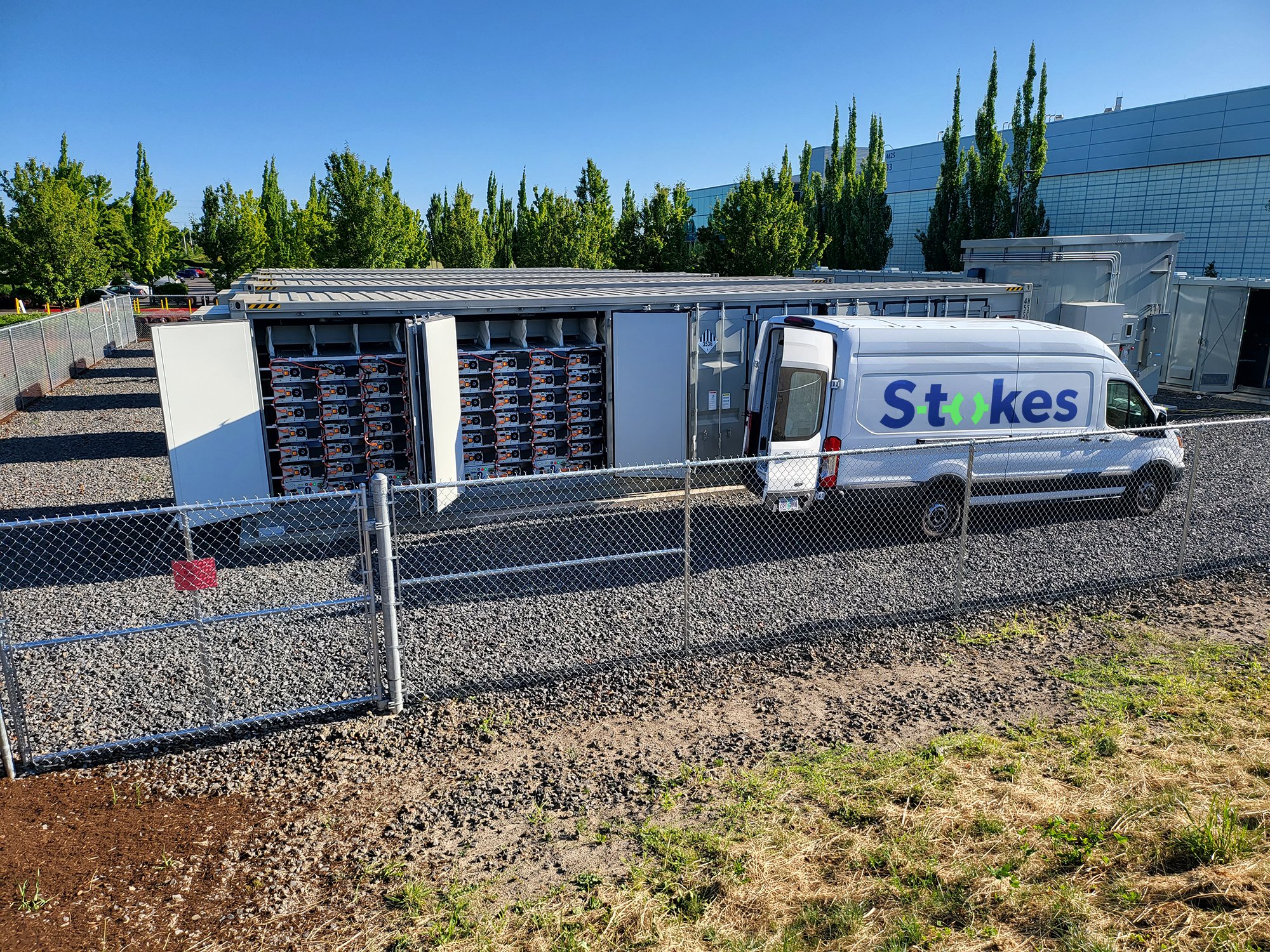
Products
The Grid Master
Data Center Battery System
Do you have unused Interconnection Capacity?
The GM is a highly controllable and modular data center battery system. Stacked application modes optimize power flow between the Battery and data center servers. By optimizing energy use, the GM can make more money than a battery or data center alone from the same-sized infrastructure.
How does it generate more revenue?
Our FERC-compliant battery and data center energy management software unlocks capacity typically underutilized in battery systems. The industrial power plant controller integrates the data server’s power draw into “fast” ancillary grid services, achieving full system responses in milliseconds. Most importantly, the data center’s power draw does not impact the battery’s usage in application modes such as regulation services (Automatic Generation Control), energy arbitrage (peak shifting), frequency control (PFC, PFR, or FFR), or Reactive VAR voltage control.
The Grid Master Series
A data center for batteries, and a battery for data centers.
Consider the 2-hour short-duration battery, a solution utilized only 4 hours daily, leaving 20 hours for data center applications like AI, high-performance computing, and Blockchain. Notably, two of those four hours coincide with peak energy prices, making it advantageous to reduce the data center load during that time anyway.
Gigawatts of short-duration battery infrastructure are available now, with energy storage developers eager to optimize. By submitting a simple “surplus interconnection agreement application,” you can quickly add a data center to your existing power plant or battery system.
Controls and Protection Module
Power Plant Controls comply with U.S. grid operators for fast controllable load services (ERCOT, CAISO, National Grid, PGE). The system is capable of the strictest response times for ERCOT and CAISO. Multiple Inverter, converter, and battery OEM options are available. Software is tested and installed in 400 MWHRS of batteries across the US.
Grid and SCADA communications via Modbus or IEC 61850 DNP3. Grid communication and connection conform to all NERC/FERC cyber security requirements for connecting generation stations to the grid.
All typical Grid application modes STANDARD: Black start, Forming, Following, MPPT, Fast Frequency Response, Reactive Power Voltage Control, Dynamic Frequency Regulation, Fast Demand Response, Synthetic Inertia application stackable, Controllable Load, etc.
1. Remote access VPN, Firewall, 5G Cellular or Fiber internet gateway device. Satellite mining compatible.
2. Industrial PLC, Industrial PC with OPC UA server database, MQTT Cloud connect, and SEL RTAC DNP3 Interface (61850 Compliant).
3. Up to 4000-amp smart disconnect breaker with remote reset and built-in fast power meter.
4. Auxiliary power meter allows monitoring and offset of cooling and aux system loads.
5. Long duration 24 Volt UPS. Black-Start Capable with a 6-month self supply UPS capacity.
Battery Module
Patent pending “Wattfill” system uses battery inverter to smooth miner power usage and increase response time of miners to sub 2 ms. Batteries provide instantaneous responses and then adjust battery power based on the ramping miner power usage which can be slightly slower, less controllable, and less accurate than desired “fast” grid ancillary service contracts.
Batteries can black start and “form” a utility grid which enables solar inverters to “follow.” Once in sync, solar power can be stored or used directly by miners. No grid is needed to operate a solar field if the grid master is connected onsite and sized properly. New construction renewable sites could also start mining prior to grid interconnection. Each Container can efficiently utilize a 5 MW solar array.
1. Paralleled rack level inverters provide 250 kw nameplates per rack. Bipolar 4 quadrant operation.
2. Control Valve allows heat sharing between miners and batteries for cooler climates.
3. Lithium Iron Phosphate batteries used for prototype. 1 C rate and 10,000 cycle lifespan, 5 year non degradable battery option available. Perfect application for second-life EV batteries.
Mining Module
Volt-hash, Frequency-Hash, or Dollar-Hash Dynamic Hash Rate Control mode couples the miner hash rate to electric grid measurements, ISO Signals, megawatt-hour price, or transaction fees, which enables instantaneous demand or supply response from the system.
For example, If grid frequency is high, then there is too much power on the grid, so we Increase miner hash rate, which increases power consumption, increases profit, and lowers grid frequency to more desirable levels, which is also an “ancillary service” utilities will pay for. The Same process applies to Voltage readings, ISO Signals, Energy Prices, and transaction fees.
1. Precise control of miner power usage via smart PDUs and independent chip frequency control firmware.
2. Hybrid immersion/water cooled system for prototype. Keeps miners free of dust and allows overclocking. Hydro miners are also “plug and play” with regards to plumbing.
3. Miners equipped with dynamic temperature compensation lower the hash rate relative to temperature, preventing damage during intense heat. This feature is critical for increasing the reliability and longevity of miners.
4. 480 Volt 3 phase miners allow for direct connection between inverter and miners. No transformer needed.









